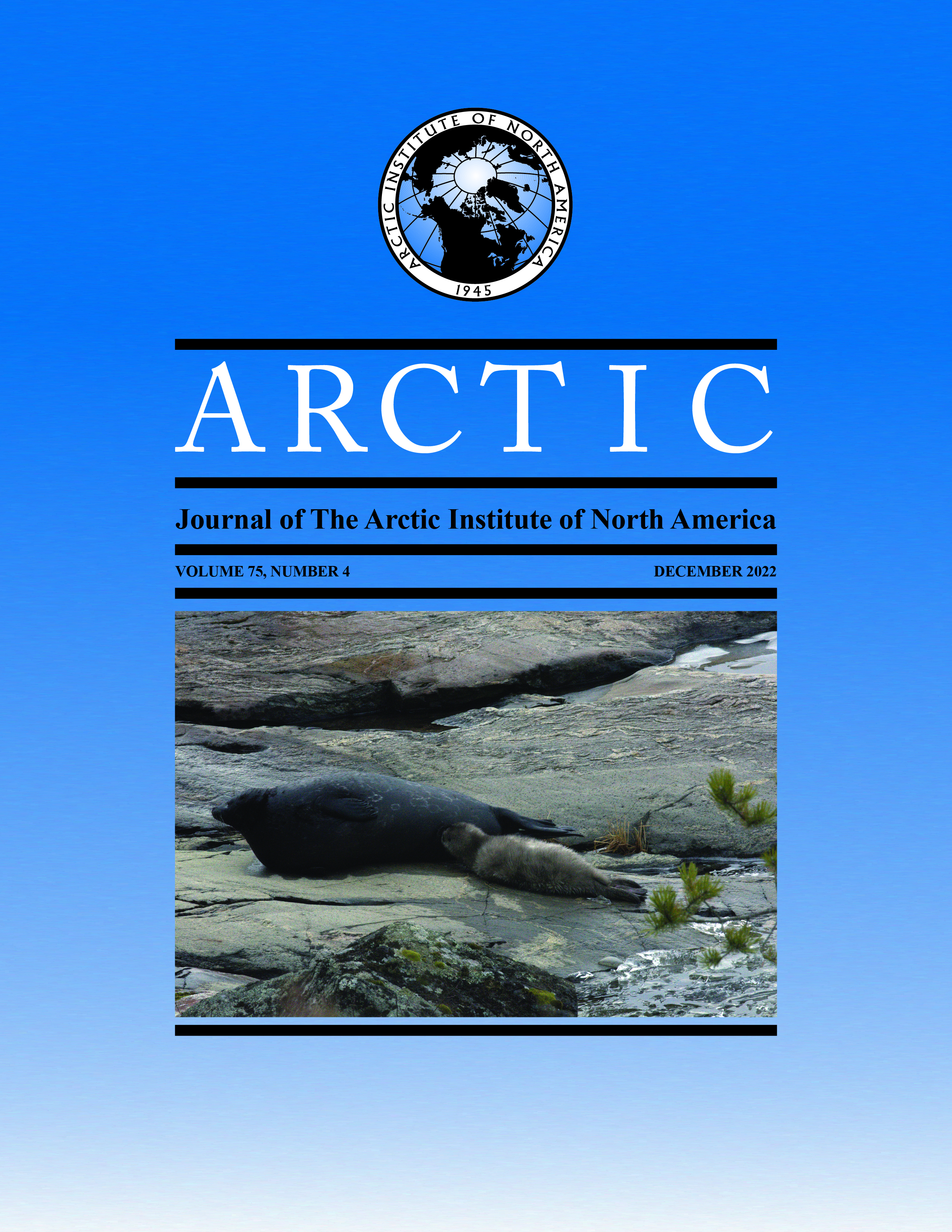The Underwater Soundscape of Minto Inlet, Northwest Territories, Canada
DOI:
https://doi.org/10.14430/arctic76400Ключевые слова:
Arctic; ambient sound; bioacoustics; cetaceans; fish; passive acoustic monitoring; pinnipeds; sea ice; underwater noise; underwater sound levelsАннотация
Passive acoustic monitoring is a powerful tool for observing soniferous species in remote marine environments over long periods of time, which can inform conservation planning and wildlife management. In this study, we collected seven months of passive acoustic data from early February to early September 2019 in Minto Inlet, Northwest Territories, Canada, to examine the seasonal presence of four species of marine mammals and unidentified fish species, examine drivers of underwater sound levels, and quantify underwater noise from vessel traffic. Bearded seals were vocally present from mid-March to early July. Ringed seals were present in every month. Beluga whales were present from early July until September. Bowhead whales were detected from April to August, and fish were detected from February to July. Underwater sound levels were dampened by the presence of landfast sea ice and increased with wind speed. Increased bearded seal calls also caused increased sound levels. The only vessel detected was the research vessel that recovered the acoustic recorder. Underwater sound levels were much lower in Minto Inlet compared to other areas in the region, and it appears to be an important site for many marine mammals where forage fish species, primarily Arctic cod, are abundant at depth. These results are in line with Minto Inlet being identified as an important area by the community of Ulukhaktok. At present, anthropogenic impact on this area appears to be very low, but further monitoring is required to determine if any management measures are necessary to maintain these low levels.
Скачивания
Загрузки
Опубликован
Выпуск
Раздел
Лицензия
Copyright (c) 2022 ARCTIC

Это произведение доступно по лицензии Creative Commons «Attribution» («Атрибуция») 4.0 Всемирная.


